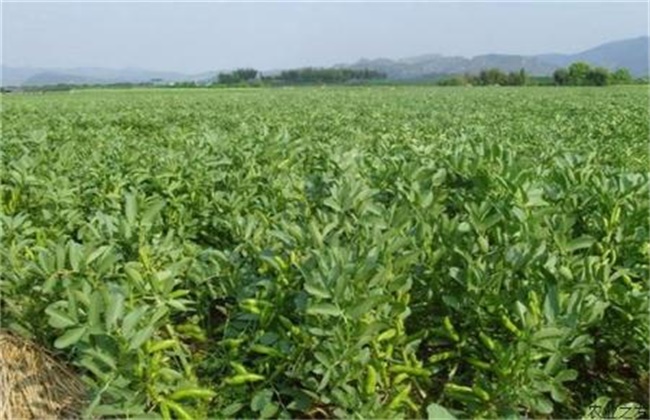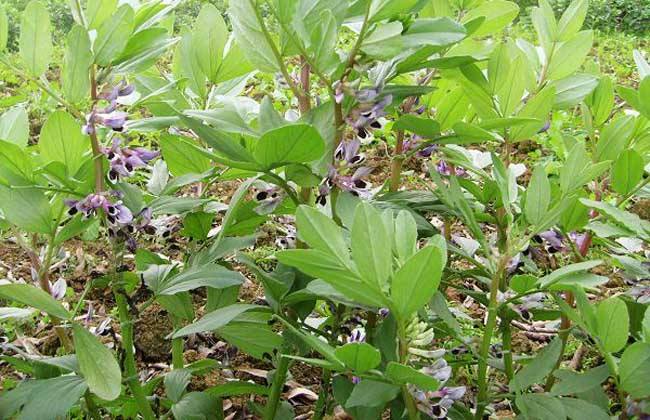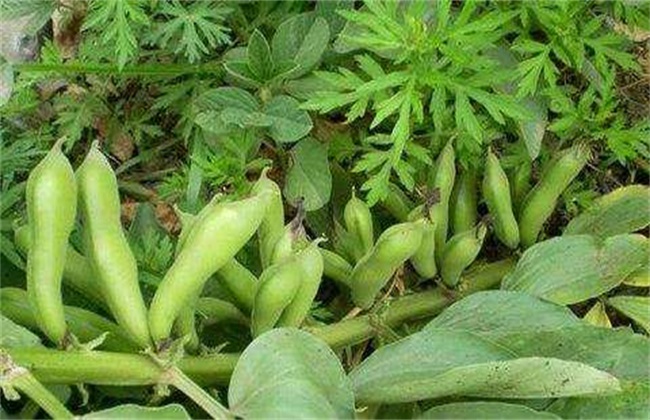High-yield cultivation techniques of Vicia faba
Broad bean is rich in nutrients and is a grain and vegetable crop. Stems and leaves are also excellent livestock feed, but also excellent fertilizer, its root nitrogen fixation capacity is strong, to improve soil fertility, to ensure sustained yield has a significant role. However, in order to obtain Gundam in production, several key points need to be grasped. Let's take a look at them together.

1. Insist on crop rotation
The yield of broad bean is not high, one of the important reasons is caused by continuous cropping for a long time. The longer the continuous cropping years, the smaller the individual, the less branches, the higher the rate of dead seedlings, the higher the frequency of diseases and insect pests, the lower the yield and the poor quality. According to research and investigation, the growth status, yield and quality of continuous cropping plants are not as good as continuous cropping. Taking yield as an example, continuous cropping for two years, yield will decrease by about 13%, continuous cropping for five years, yield will decrease by 75%, and vice versa, yield will increase by more than 3 times. Therefore, crop varieties and planting areas should be balanced when planting, rotation should be implemented as far as possible, and continuous cropping for many years should be avoided. Generally, rotation should be carried out once every 2-3 years to improve soil environment and reduce the harm of broad bean diseases and insect pests.
2. Seeding at the right time
Any crops should be timely guaranteed when planting, especially the cold resistance of broad bean is poor, and the sowing time is more strict. Many farmers are accustomed to sowing too early, so as to make good roots before wintering, and effectively branch large branches, laying the foundation for high yield. Early sowing will bring three unfavorable factors: one is the strong growth before the year, the cold resistance will be weak when the broad bean overwinters, and the freezing injury will be serious during the winter, resulting in serious yield reduction; Second, aphids are seriously harmed, resulting in growth retardation and virus infection by aphids; Third, in case of yellow sand weather, it is northwest wind from February to March in northwest China, and a large amount of dust is mixed in the wind. The dust falling on the leaves and flowers of broad bean will cause poor pollination, resulting in non-pod phenomenon, resulting in large-scale yield reduction. Therefore, it is necessary to change the traditional planting habits and postpone the sowing time appropriately, generally sowing 5-7 days after the cold dew.
3. Reasonable close planting
When sowing, reasonable sowing should be carried out according to soil fertility and local environment. If sowing is too dense, its permeability conditions will not only reduce the effective branches per unit area, but also inhibit the high yield performance of effective branches, which will have a great impact on yield. Therefore, in order to ensure the high yield of broad bean, many farmers have the habit of pruning, artificially adjusting the density, improving the permeability of the field, promoting the healthy growth of branches, and ensuring the appropriate density.
4. Increase phosphorus and potassium fertilizer application
The nitrogen fixation capacity of broad bean itself is limited, so if no fertilizer is applied during production, it can only maintain low yield by relying on its own nitrogen fixation capacity, so it is necessary to increase fertilizer appropriately, so that it can make its early branches, increase branches, and grow strong branches to achieve high yield. When sowing, it is necessary to apply sufficient base fertilizer, 800-1000 kg of high-quality farm manure or 25-30 kg of high-quality compound fertilizer per mu, and provide it for its growth according to law. Its nitrogen fixation ability can meet its growth needs, so nitrogen fertilizer application should be controlled to avoid excessive growth, but it is sensitive to phosphorus and potassium fertilizer. If phosphorus and potassium fertilizer are deficient, the plant is short and branched, so when sowing, plant ash 100-200 kg or phosphorus and potassium fertilizer 20-30 kg per mu is applied, and the yield increase effect is better.
The above is the introduction of high-yield cultivation technology of broad bean, hope to help you, want to know more about the relevant knowledge, please pay attention to us.
Related
- Where is it suitable to grow horseradish in China? it is expected to see the middle altitude horseradish in Alishan.
- How to prevent tomato virus disease reasonably? (Control methods included)
- Many people like to plant towel gourd on the balcony. What are the main points of this method and management?
- What crops can chili peppers be mixed with?
- Fertilization techniques and matters needing attention in Tomato
- What are the grafting techniques for peach seedlings in spring?
- Harm and control methods of root swelling disease of Chinese cabbage
- What are the pests of sweet potatoes? How to prevent and cure it?
- Symptoms, causes and Control methods of navel Rot in Tomato
- The cause of "Cucumber rotten bibcock" in Farmers' planting Cucumber and its Control Plan



